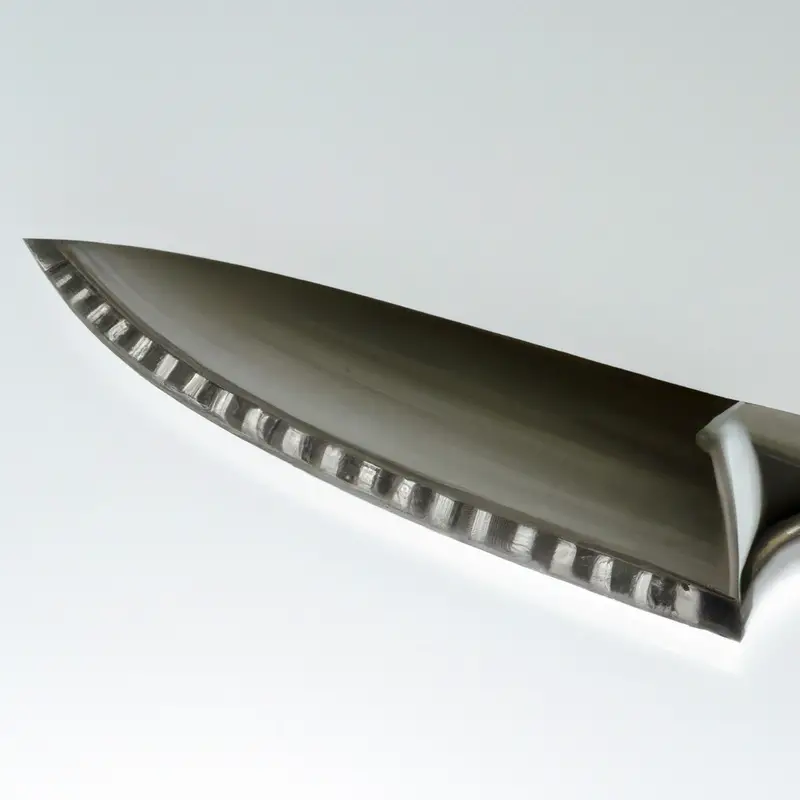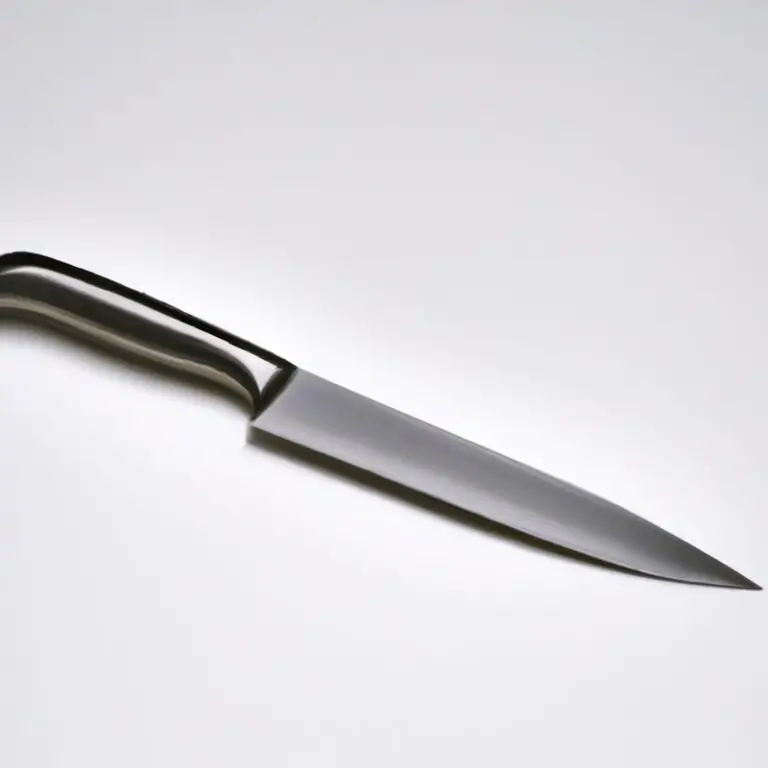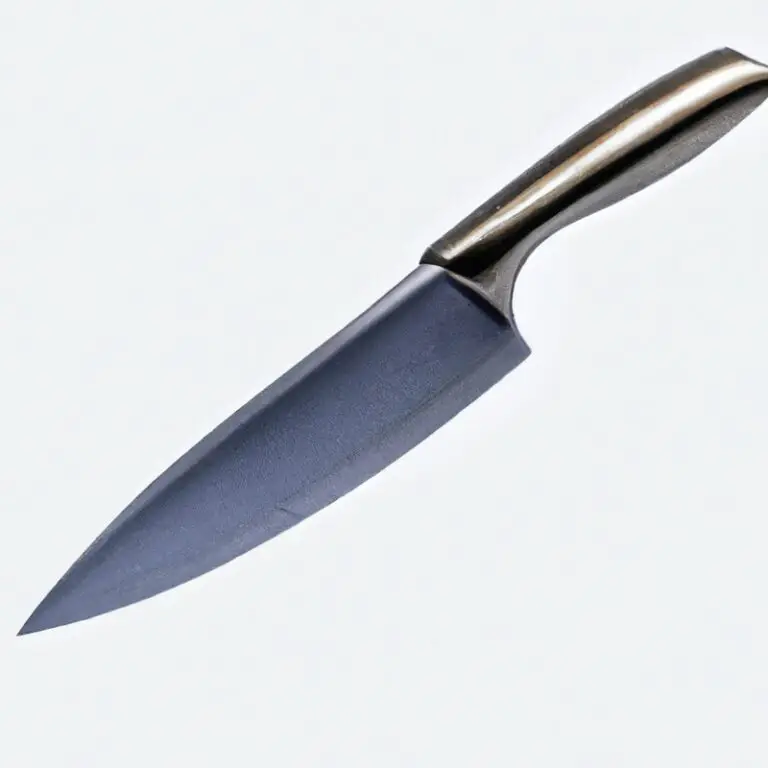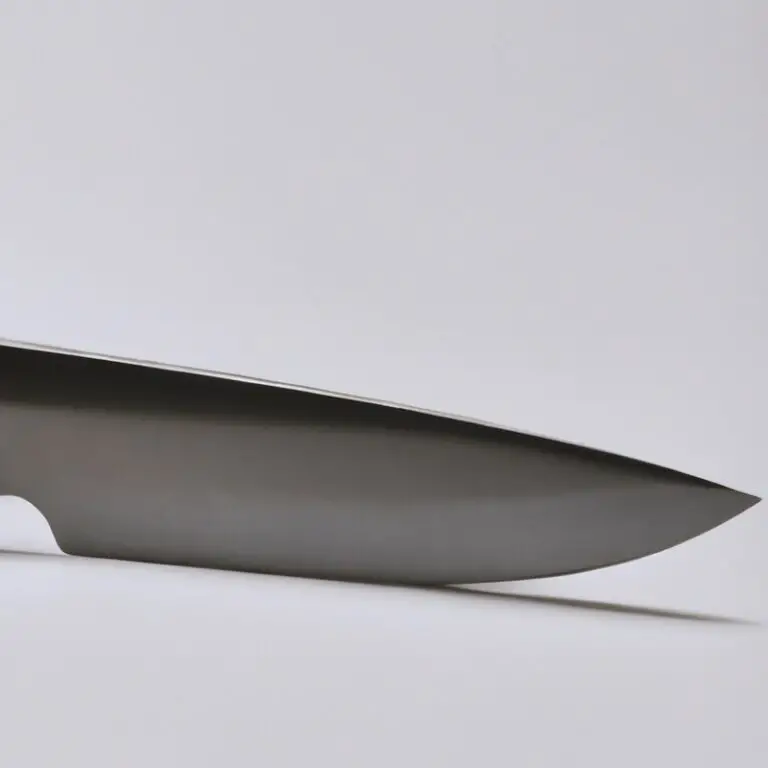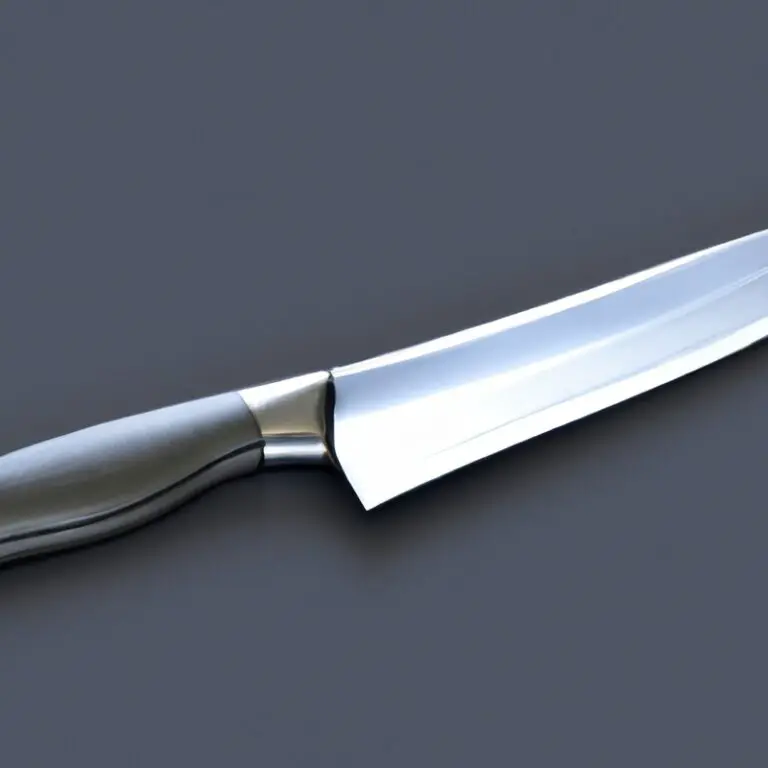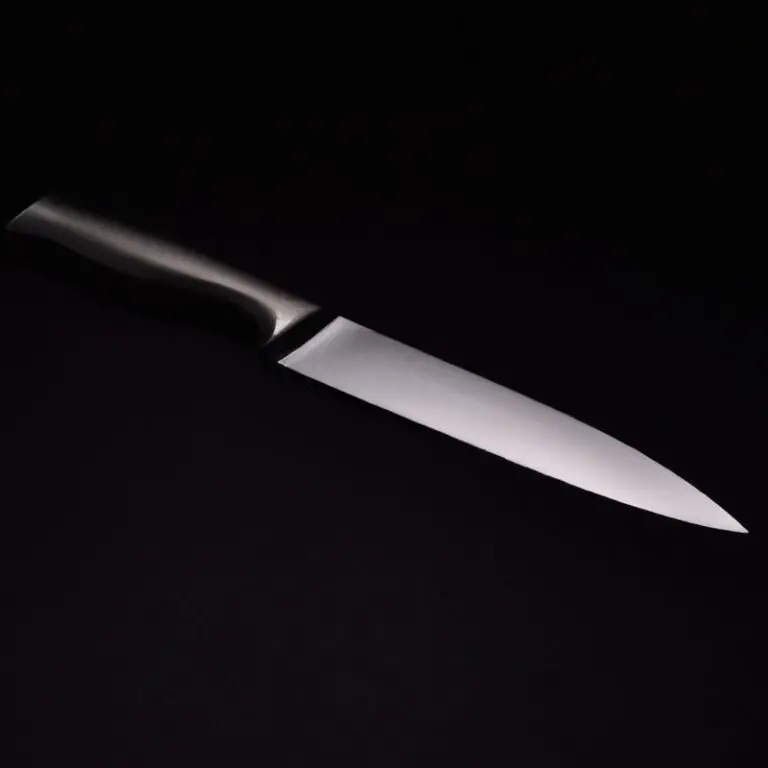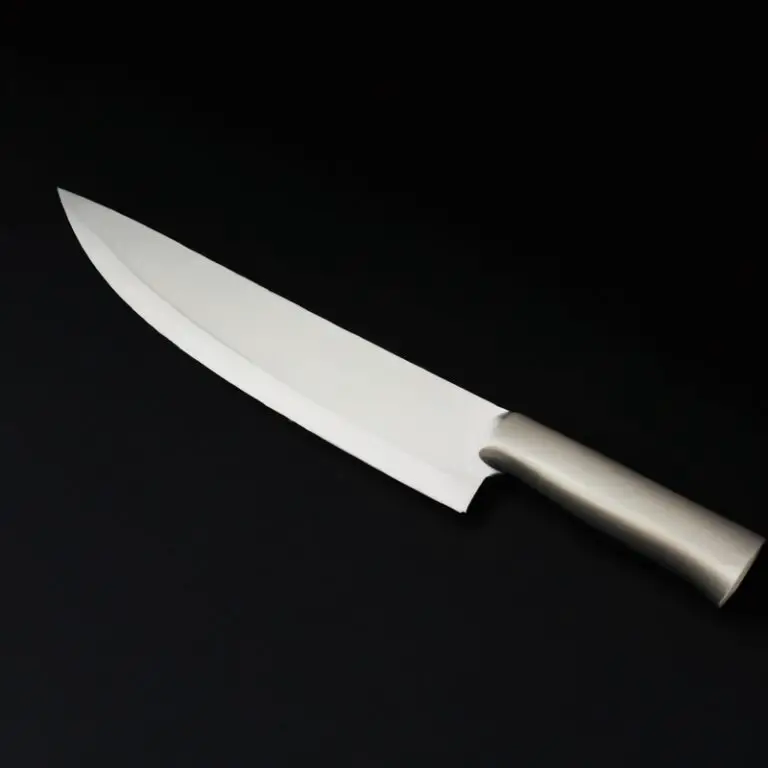Can You Use a Santoku Knife For Slicing Bread? Tip:
Key Takeaways:
- Santoku knives are versatile and can handle a variety of tasks, including slicing bread.
- However, bread knives are designed specifically for bread and offer better results for a clean cut.
- If using a Santoku knife, ensure it’s sharp and has a smooth edge for a seamless slicing experience.
- Ultimately, the choice depends on individual preference and the type of bread being sliced.
Do you love using Santoku knives in the kitchen but wonder if it’s suitable for slicing bread? As a culinary enthusiast, I have faced this dilemma countless times.
Santoku knives are versatile, and their unique features make them useful in different tasks.
In this article, we’ll delve into the specifics of Santoku knives, explore bread-slicing techniques, and discuss the pros and cons of using a Santoku knife for slicing bread. You’ll learn how to use a Santoku knife like a pro and maintain its sharpness while discovering alternative knives that could be handy.
Let’s dive in and decode the anatomy of a Santoku and bread knife!
| Santoku knife | Bread knife |
|---|---|
| Typically shorter and lighter than a bread knife, with a blade length of around 7 inches | Has a longer blade length of around 8-10 inches, specifically designed for slicing bread |
| Wide blade is suitable for slicing vegetables, fish, and meat | Blade is serrated, specifically designed for slicing through bread without crushing or tearing it |
| May crush or tear bread when slicing due to the wide blade | Can easily and cleanly slice through bread without damaging the texture |
| May require more effort and precision to slice through bread | Effortlessly slices through bread with minimal pressure and precision |
| Not recommended for regular use on bread | Recommended for regular use on bread |
Understanding Santoku knives: Features and Benefits
Santoku knives are a popular kitchen tool that originated from Japan. They are known for their versatile nature and are perfect for slicing, dicing, and chopping meats and vegetables.
The word Santoku translates to three virtues, which represent the knife’s ability to cut meat, fish, and vegetables with ease.
One of the main features of the Santoku knife is its blade. It typically ranges from 5 to 7 inches, and its shape is similar to a cleaver.
The blade is wide and has a flat edge with a curve at the tip, which makes it perfect for a rocking motion when chopping or dicing.
The blade is also made from high-quality steel, which ensures that it stays sharp for a long time. The steel used in Santoku knives is usually harder than other knives, which means that they retain their sharpness longer.
Another benefit of using a Santoku knife is its weight.
It is typically lighter than other knives, which makes it easier to maneuver. It is also more balanced, which reduces stress on the wrist and hand.
In summary, a Santoku knife is a versatile tool that can be used for various cutting tasks in the kitchen.
Its features and benefits include a wide, sharp blade made from high-quality steel and its lightweight and balanced design.
Different Types of Blades & Their Uses in the Kitchen
In the kitchen, there are many different types of knives for various purposes. Understanding the different types of blades and their uses is essential for optimal results and safety.
- Chef’s Knife: The most versatile knife in the kitchen, ideal for chopping, mincing, and slicing vegetables, meat, and fish.
- Paring Knife: A small knife for peeling and trimming fruits and vegetables.
- Bread Knife: A serrated blade for slicing bread, cakes, and other baked goods.
- Santoku Knife: A Japanese knife with a flat blade and a Granton edge, perfect for slicing, chopping, and dicing meats, fish, and vegetables.
- Cleaver: A heavy, broad blade for chopping meat and poultry bones.
- Boning Knife: A thin, flexible blade for removing bones from meat, fish, and poultry.
- Utility Knife: A mid-range size between chef’s and paring knives, good for all-purpose cutting.
Each blade has a unique purpose and function, and using the appropriate one for the task at hand ensures efficient and safe cutting.
Bread Slicing Techniques and Tips for Optimal Results
Achieving optimal results when slicing bread requires the proper technique and some useful tips. Here are some techniques and tips that can help you achieve better results:
- Always use a sawing motion instead of pressing down. This sawing motion helps avoid squishing the bread and results in a cleaner cut.
- A serrated knife or bread knife produces better results than a straight-edged knife. Bread knives have serrated edges designed to grip the bread better, producing smoother cuts.
- Use a slicing guide to ensure you cut evenly sized slices. A slicing guide also helps avoid uneven cutting, resulting in better presentation.
- Slightly freezing the bread before slicing helps it hold its shape better. The frozen bread can hold up to a sharper blade, resulting in cleaner cuts.
- Consider using a bread razor to score the bread’s top before slicing, providing a guide to help avoid cutting too deep into the loaf.
By implementing these tips and techniques, you can achieve optimal results when slicing bread for a better culinary experience.
Pros and Cons of Using a Santoku Knife for Slicing Bread
Pros and Cons of Using a Santoku Knife for Slicing Bread Pros:
- Versatile: Santoku knives can be used for various kitchen tasks, including slicing bread.
- Precision: The sharp, thin blade of a Santoku knife allows for precise slices of bread, especially for artisanal or crusty loaves.
- Compact: Santoku knives are compact, making them ideal for small kitchens or for those with limited storage space.
Cons:
- Not Ideal for Soft Bread: Santoku knives aren’t ideal for slicing soft or fluffy bread as their sharpness can easily crush the loaf.
- Limited Length: The shorter blade of a Santoku knife may not be ideal for larger loaves of bread.
- Requires Maintenance: Regular sharpening and honing is necessary to maintain the sharpness of the Santoku knife.
Overall, while a Santoku knife can be used for slicing bread, it may not be the best option for all types of bread and may require some extra maintenance.
How to Use a Santoku knife to slice bread like a Pro
To use a Santoku knife to slice bread like a pro, follow these easy steps:
- Choose your bread wisely – pick bread that is not too crusty or tough, as Santoku knives work best on softer bread types.
- Position the bread on a cutting board – make sure the bread is stable enough to avoid injuries.
- Hold the knife correctly – grip the knife handle firmly with your dominant hand and hold the bread with your other hand.
- Start cutting – place the blade at the top of the bread’s edge and slice through the bread in a gentle sawing motion. Use the entire blade length to ensure smooth and efficient cuts.
- Repeat the process – continue slicing until you have the desired number of bread slices.
With these steps, you can use your Santoku knife to slice bread like a pro. It is important to note that while Santoku knives are versatile, they work best in slicing meats, fruits, and vegetables.
Consider investing in a bread knife if you require a knife specifically for bread slicing.
The Importance of Choosing the Right Knife for the Job
Choosing the right knife for a specific task is crucial for achieving the desired results. A Santoku knife may be suitable for various kitchen tasks, but it may not be the ideal tool for slicing bread.
If you want to enjoy a perfectly sliced loaf of bread, it’s essential to use the appropriate knife.
Using the right knife ensures that you slice the bread evenly, without tearing or squishing it. Furthermore, it makes the slicing process more efficient, reducing your effort and time.
Therefore, take into consideration the knife’s blade, sharpness, weight, and handle when selecting a knife for bread slicing.
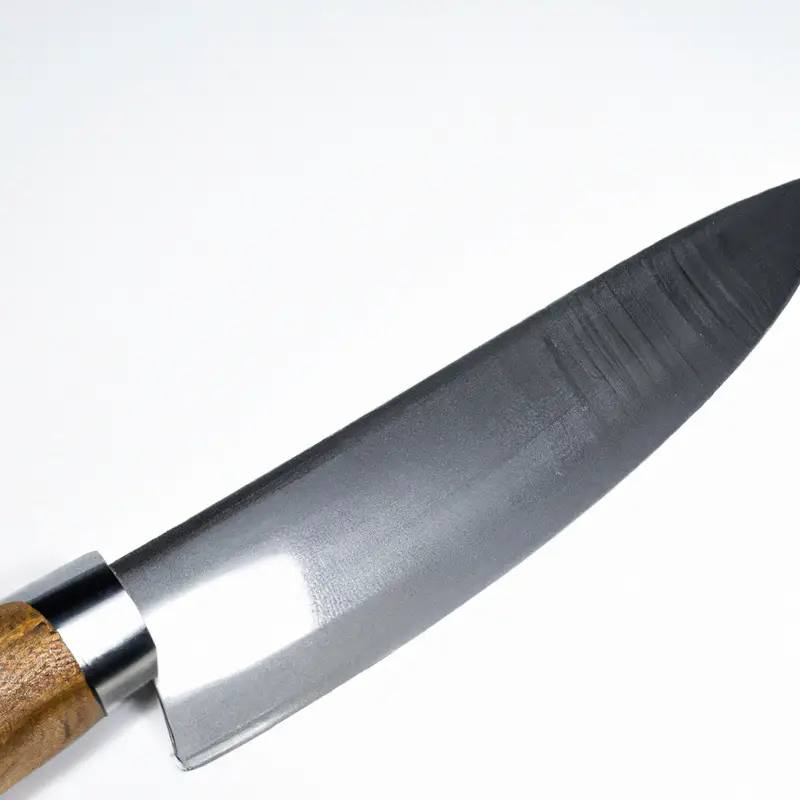
Maintaining the Sharpness of Your Santoku Blade
To maintain the sharpness of your Santoku blade, it is essential to use a honing steel regularly. A honing steel helps realign the edge of the blade, keeping it straight and sharp.
It is also important to sharpen your Santoku knife periodically, either with a whetstone or by using an electric sharpener.
Clean your blade after each use and avoid washing it in the dishwasher, as the high temperature can damage the blade. Store your Santoku knife properly in a knife block or on a magnetic wall strip to prevent it from dulling or becoming damaged.
By taking good care of your Santoku knife, you can ensure that it remains sharp and reliable for slicing bread and other kitchen tasks.
Alternative Knives to Use for Slicing Bread
While a Santoku knife can be used for slicing bread, using a dedicated bread knife or a serrated knife is recommended because of their serrated edge. The teeth on the edge of a serrated knife or bread knife help grip the bread, ensuring a clean and precise cut without crushing the loaf.
Other alternative knives that you can use for slicing bread includes a chef’s knife, offset knife, or a carving knife.
Chef’s knives and carving knives have a sharp, thin blade that can slice through bread smoothly, though they do not have a serrated edge. Offset knives have the added advantage of keeping your hands clear of the loaf while providing excellent control and precision during slicing.
When selecting a knife for slicing bread, choose one that has a long blade, a serrated edge, and a comfortable handle.
Make sure to choose a knife that is well-balanced and suits your cutting style and preferences. Although a Santoku knife can be used for slicing bread, using a serrated or dedicated bread knife will provide optimal results.
Alternatively, chef’s knives, offset knives, or carving knives can also be used for slicing bread with success.
The best knife for the job depends on your personal preferences and cutting style.
Factors to Consider When Choosing a Knife for Slicing Bread
When choosing a knife for slicing bread, there are several factors to consider. Here are some of the most important:
- Serrated Blade – Make sure the blade is serrated, as this will help to easily cut through the bread without crushing it.
- Blade Length – The length of the blade should be long enough to slice through the entire loaf of bread. A blade length of 8-10 inches is recommended.
- Blade Thickness – The blade should be thin enough to make clean, precise cuts without tearing the bread.
- Handle – Choose a knife with a comfortable grip, as you will need to apply some pressure while cutting through the bread.
- Brand and Quality – Invest in a reputable brand and quality knife that will last for a long time.
By taking these factors into consideration, you can choose the right knife for slicing bread and achieve perfect slices every time.
Decoding the Anatomy of a Bread Knife and Santoku Knife
A bread knife typically has a long, thin, serrated blade that is designed to slice through crusty bread without crushing the interior. The serrated edge allows for a sawing motion while the length of the blade ensures that you can cut through large loaves of bread with ease.
On the other hand, a Santoku knife has a shorter and wider blade, which makes it ideal for slicing, chopping, and dicing.
The blade is flat at the tip and curved at the edge, and it is sharpened on both sides. When it comes to slicing bread, a bread knife is ideal because its serrated edge can make a clean cut without crushing the loaf.
A Santoku knife is not the best choice for slicing bread, but it can be used if you don’t have a bread knife available.
However, keep in mind that a Santoku knife can crush the bread if you use too much pressure. Overall, it is essential to choose the right knife for the right task, and when it comes to slicing bread, a bread knife is the way to go for optimal results.
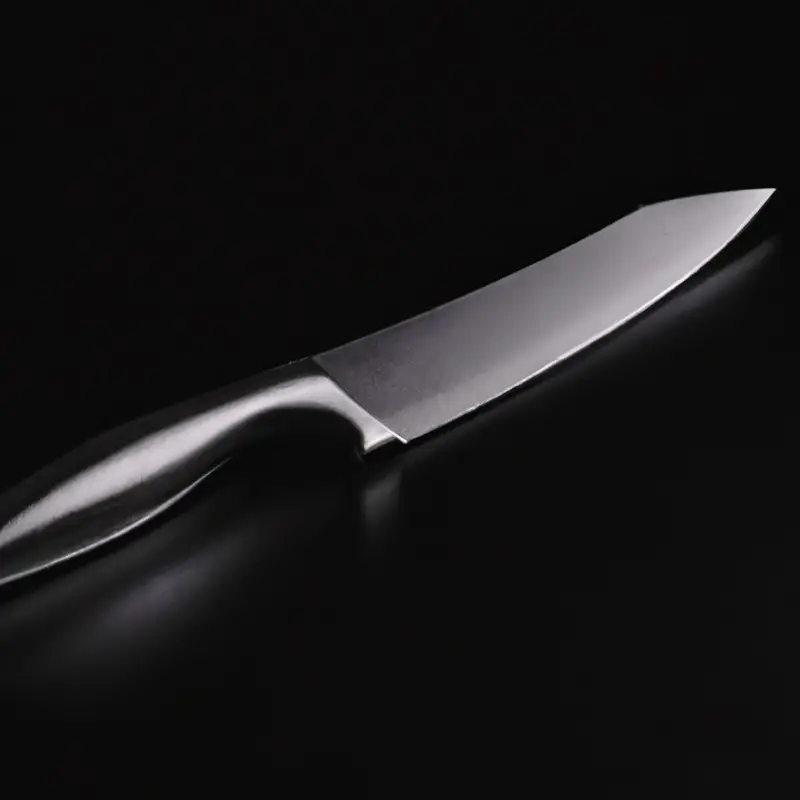
Final Verdict
While a Santoku knife can be used for slicing bread, it may not be the best option for achieving the ideal results. The serrated edges on a traditional bread knife are designed to offer a clean cut, while a Santoku knife’s straight edge may compress the loaf and cause it to tear.
However, with the right technique and sharp blade, it is possible to use a Santoku knife for bread slicing.
As a chef or home cook, selecting the right knife for the job is critical to achieving the best results in the kitchen. By considering the factors outlined in this article and taking the time to maintain the sharpness of your Santoku blade, you can make informed decisions when it comes to choosing the right tool for the task at hand.
Trust in your skills and expertise, and with the proper knowledge, you’ll be able to slice bread like a professional, whether using a Santoku knife or another suitable alternative.

